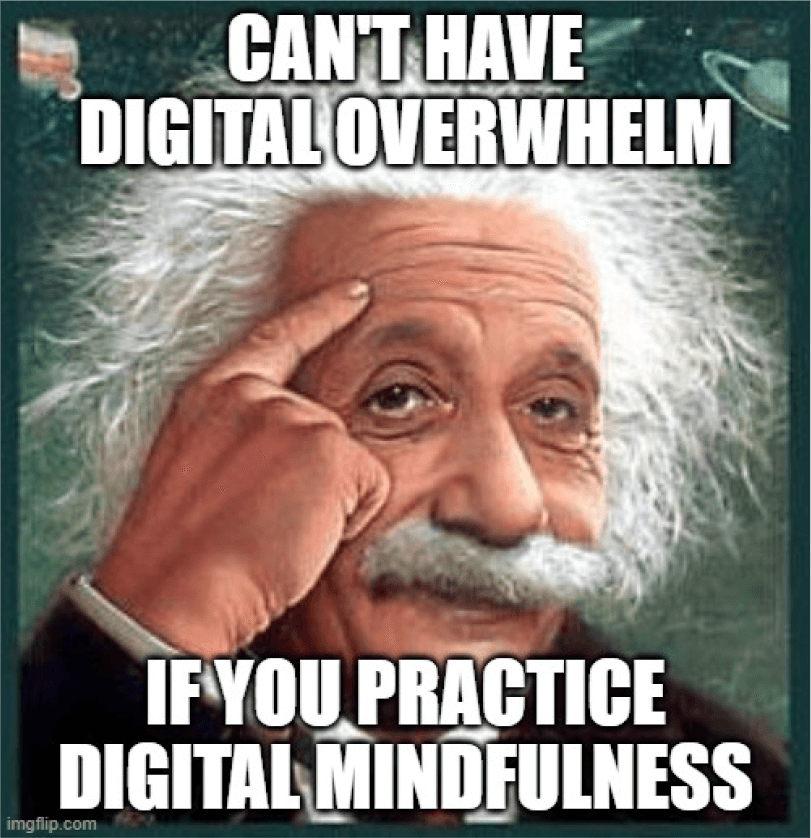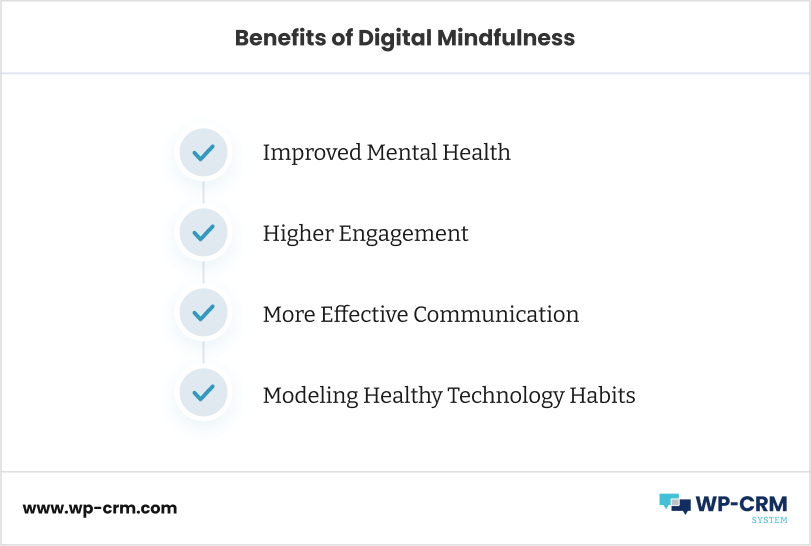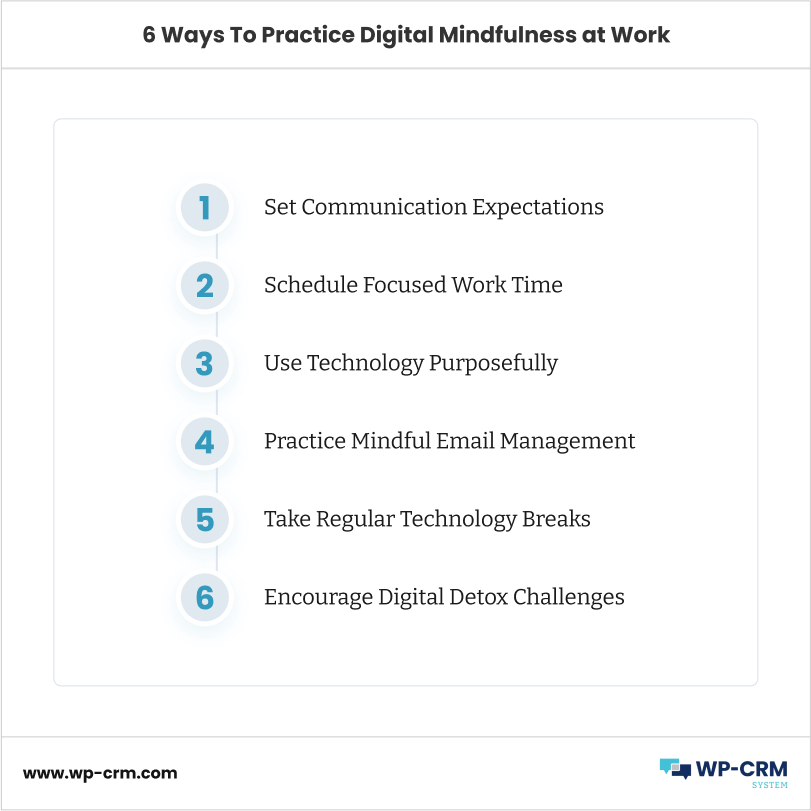How To Practice Digital Mindfulness
In today’s technology-driven world, digital mindfulness stands as a crucial practice. It involves being intentional and present while engaging with technology, which is vital given the omnipresence of digital distractions. From never-ending notifications to addictive doom-scrolling, the constant exposure to digital stimuli adversely affects mental health, productivity, and interpersonal relationships.
Of course, we can’t deny the many perks the digitalization of our lives has brought to the modern world. With the abundance of tools available, there is hardly an everyday work problem that can’t be solved with a few clicks. And with tons of options to choose from.
Yes, the variety we have today! It can be quite overwhelming to have too many options to choose from, too much info to process, and so many opportunities to procrastinate. 88% of the workforce procrastinate for at least an hour a day.
However, by cultivating digital mindfulness, individuals can mitigate these negative effects. Embracing digital mindfulness leads to enhanced focus, reduced stress levels, and a more harmonious work-life balance. It empowers individuals to reclaim control over their attention and behavior amidst the ever-expanding digital landscape.
Therefore, understanding and incorporating digital mindfulness into daily life is pivotal for navigating the modern era with intentionality and well-being.
In this article, we will explain digital mindfulness as a concept, pinpoint its benefits, suggest ways to promote it at work and suggest six effective ways to practice it. Let’s begin, shall we?
What Is Digital Mindfulness?

Digital mindfulness is the deliberate practice of maintaining intentionality and presence while engaging with technology, rather than allowing it to dictate our attention and actions. At its core, it involves being mindful of how we interact with digital devices and platforms, ensuring that they serve us rather than dominate our lives.
Key principles of digital mindfulness include being purposeful with technology use, which means consciously choosing when and how to engage with digital tools to align with our goals and values. Setting boundaries is another crucial aspect, as it involves establishing limits on screen time, notifications, and digital interactions to prevent overwhelm and maintain balance.
Additionally, practicing self-awareness is essential in recognizing how digital technology impacts our thoughts, emotions, and behaviors, allowing us to make intentional choices that support our well-being.
It’s important to differentiate digital mindfulness from practices like digital detox or disconnection. While digital detox involves temporarily abstaining from technology altogether, and disconnection may involve permanently severing ties with certain digital platforms, digital mindfulness advocates for a more balanced and sustainable approach. Rather than completely avoiding technology, digital mindfulness encourages a mindful and intentional use of it, where individuals remain engaged while also being aware of its potential impact on their lives.
Benefits of Digital Mindfulness

Practicing digital mindfulness offers numerous benefits for both individuals and organizations:
Improved Mental Health
By reducing digital distractions and promoting focused work, digital mindfulness can help alleviate stress, anxiety, and feelings of overwhelm. Mindful use of technology allows individuals to maintain a healthier balance between work and personal life, contributing to overall well-being.
Higher Engagement
When individuals are mindful of their digital habits, they are more likely to be fully present, and boost engagement. By minimizing distractions and prioritizing focused work time, employees can increase their productivity and effectiveness in completing tasks.
More Effective Communication
Mindful communication practices, such as setting clear expectations and boundaries, can enhance the quality and efficiency of communication within teams and organizations. By fostering open and transparent discussions, digital mindfulness promotes collaboration and teamwork.
Modeling Healthy Technology Habits
As a leader, it’s essential to model healthy technology habits and promote digital mindfulness within your team or organization. Lead by example by demonstrating mindful use of technology, such as setting boundaries around email and communication, taking regular breaks from digital devices, and prioritizing tasks. Encourage open conversations about work-life balance and digital well-being, and provide support and resources to help employees cultivate healthy digital habits.
6 Ways To Practice Digital Mindfulness at Work

In today’s digital age, practicing mindfulness at work is crucial for maintaining productivity, fostering well-being, and promoting a healthy work environment. Here are several specific ways to integrate digital mindfulness into your workday:
1. Set Communication Expectations
Establish clear guidelines for communication within your team or organization. Encourage employees to use communication tools mindfully, such as setting expectations for response times and distinguishing between urgent and non-urgent messages. By promoting thoughtful communication practices, you can reduce digital distractions and foster a more focused work environment.
2. Schedule Focused Work Time
Allocate dedicated blocks of time for work without interruptions. Encourage employees to turn off notifications, close unnecessary tabs, and create a distraction-free environment during these periods. By carving out time for deep, uninterrupted work, individuals can enhance their productivity and concentration.
3. Use Technology Purposefully
Instead of mindlessly browsing the internet or checking social media, use technology purposefully to support your work tasks. Leverage digital tools and apps that enhance productivity, organization, and collaboration. Prioritize tasks and allocate time for focused work using project management tools or time-tracking apps.
4. Practice Mindful Email Management
Email overload can be a significant source of digital stress. Adopt mindful email management techniques, such as setting specific times to check and respond to emails, unsubscribing from unnecessary mailing lists, and organizing emails into folders for easier retrieval. By managing your inbox mindfully, you can reduce overwhelm and improve efficiency.
5. Take Regular Technology Breaks
Incorporate short breaks throughout the day to disconnect from digital devices and recharge. Use these breaks to engage in activities that promote relaxation and mental well-being, such as taking a walk, practicing mindfulness meditation, or simply stepping away from your desk. By allowing yourself time to rest and recharge, you can prevent burnout and maintain focus throughout the workday.
6. Encourage Digital Detox Challenges
Organize periodic digital detox challenges within your team or organization. Encourage employees to take a break from non-essential digital devices and activities for a specified period, such as a weekend or a week. Provide support and resources to help participants navigate disconnecting from technology, and facilitate discussions to reflect on the experience afterward.
In Closing
In conclusion, embracing digital mindfulness is essential in navigating today’s technology-driven world. By being intentional with our digital interactions, setting boundaries, and prioritizing focused work time, individuals can mitigate the negative effects of constant digital distractions. Employers play a crucial role in promoting digital mindfulness by fostering a supportive culture that values well-being and balance over constant connectivity. Together, by practicing digital mindfulness both individually and collectively, we can cultivate a healthier and more productive relationship with technology.
